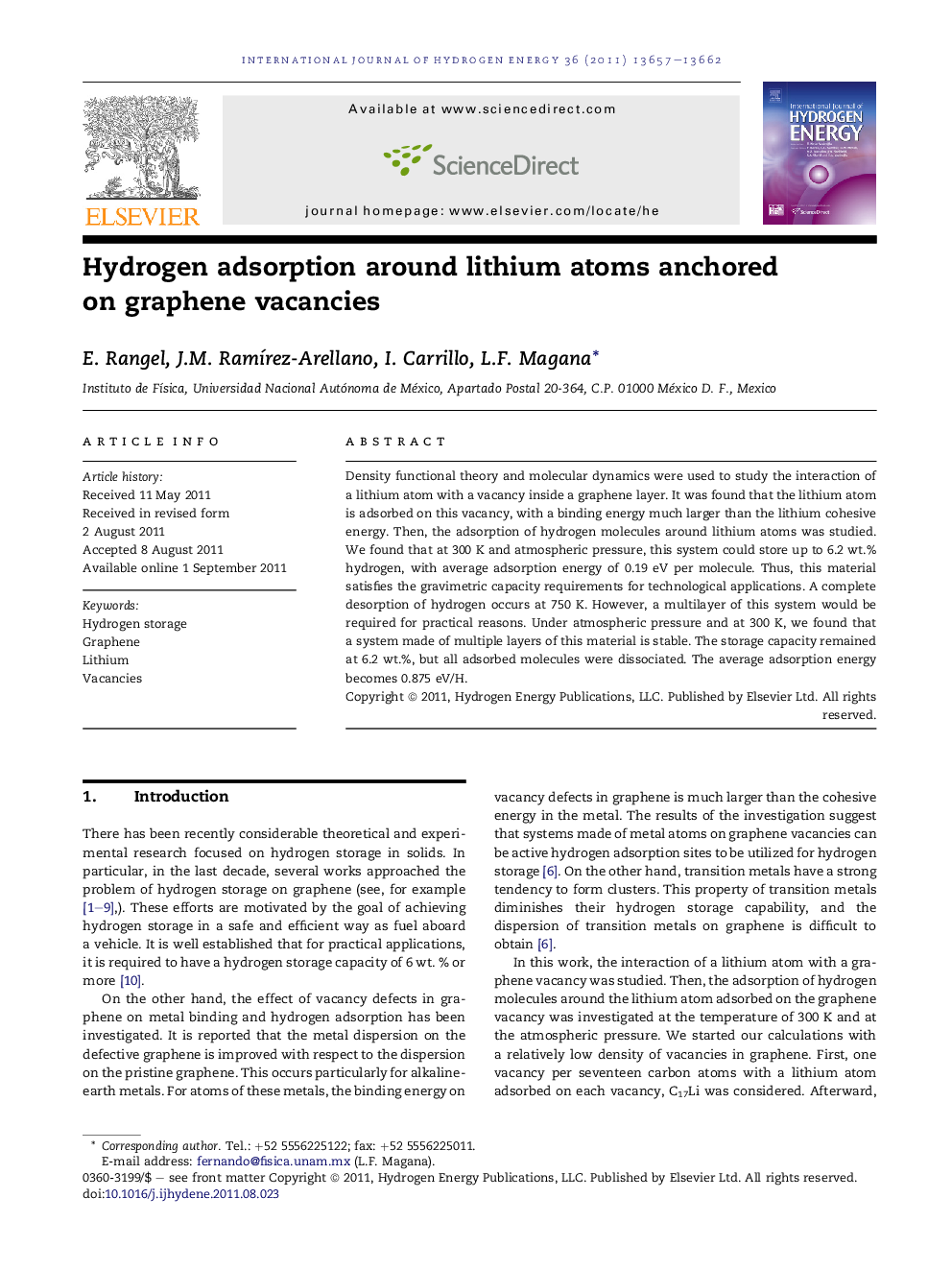| Article ID | Journal | Published Year | Pages | File Type |
|---|---|---|---|---|
| 1278709 | International Journal of Hydrogen Energy | 2011 | 6 Pages |
Density functional theory and molecular dynamics were used to study the interaction of a lithium atom with a vacancy inside a graphene layer. It was found that the lithium atom is adsorbed on this vacancy, with a binding energy much larger than the lithium cohesive energy. Then, the adsorption of hydrogen molecules around lithium atoms was studied. We found that at 300 K and atmospheric pressure, this system could store up to 6.2 wt.% hydrogen, with average adsorption energy of 0.19 eV per molecule. Thus, this material satisfies the gravimetric capacity requirements for technological applications. A complete desorption of hydrogen occurs at 750 K. However, a multilayer of this system would be required for practical reasons. Under atmospheric pressure and at 300 K, we found that a system made of multiple layers of this material is stable. The storage capacity remained at 6.2 wt.%, but all adsorbed molecules were dissociated. The average adsorption energy becomes 0.875 eV/H.
► We find a possible hydrogen storage system within the gravimetric requirements for applications. ► We find that a Li atom binds to a graphene vacancy with energy larger than the lithium cohesive energy. ► At 300 K and atmospheric pressure, the system C7Li stores 6.2 wt.% molecular hydrogen with 0.19 eV/H2. ► Under the same conditions, a system of C7Li layers stores 6.2 wt.% atomic hydrogen with 0.875 eV/H. ► At 500 K, one hydrogen molecule remains adsorbed in both C17Li and C7Li, and none at 750 K.
